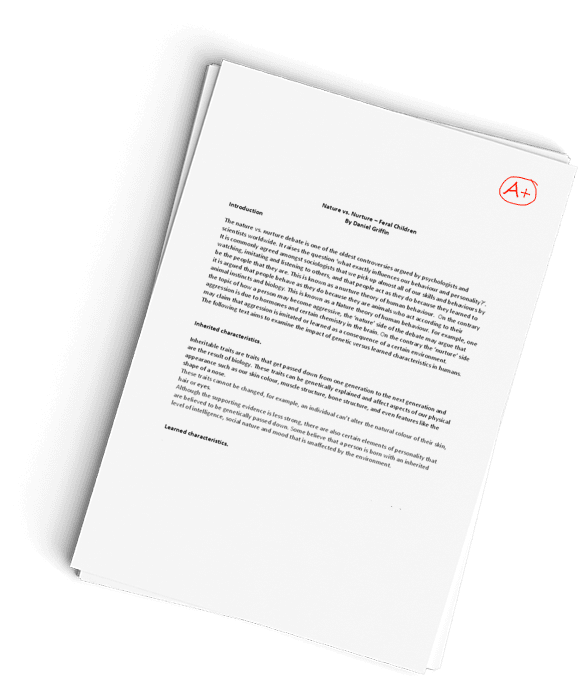Writing S.M.A.R.T. GOLES
Question Description
S.M.A.R.T. GOALS
S = Specific
M = Measurable
A = Achievable
R = Relevant
T = Timed
Specific What do you want the student to accomplish? Describe the goal in precise terms so that there is no confusion as to what needs to be accomplished. Try answering the Ws: Who, what, when, why.
Measurable If we cant measure the progress, how do we know when we are done? Make sure you include the measure you will use to judge the progress toward achieving the goal.
Achievable Does the student or teacher have enough control to make the goal happen? Construct a goal that is achievable. Dont set it so high that failure will result.
Relevant Is the goal consistent with other goals, and does it fit with immediate and long-range plans? Goals must be an important element in the plan of achieving success for the student. The goal should relate to something that is necessary.
Timed What is the evaluation deadline for the goal? Effective goals are constantly reviewed and revised. Determine a date, timeframe, or schedule for when the goal should be achieved.
Question to Consider in Writing SMART Goals:
Specific: Is the goal linked to one activity or one thought?
Measurable: Can I plot my progress on a graph? Can I say how much Ive improved from the previous day or week?
Actionable: What task or action will I be doing? Can I draw a picture of someone doing that action?
Realistic: Are there examples of people who have achieved this level of success in this amount of time? What are some obstacles I might face along the way? Would any of those obstacles stop me in my tracks?
Timely: Did I include a set time in which I want to achieve my goal? Days? Weeks? Months?
Is it a S.M.A.R.T. goal or not?
Student A has problems with reading comprehension. He is in 3rdgrade and has difficulty comprehending written text. An evaluation of his reading skills indicates that he is functioning at a first-grade level as judged by his performance of the reading comprehension subtest of the Woodcock-Johnson Assessment Battery. He was assessed for special education placement, but parents requested that the multi-disciplinary team use the Response to Intervention approach before placing the child in special education. The goal below is an example of what that might look like. Is there evidence of it being a S.M.A.R.T. goal? Why?
Annual Goal: Student Awill increase reading readiness skills in the areas of phonemic awareness, letter knowledge, decoding, and word recognition, by the end of the second grading period of the semester, to improve reading comprehension, as measured by teacher made test (i.e., running records, probes, anecdotal records, work samples, etc.) with 80% accuracy.
Video related to SMART GOALS:
How to write a SMART goal: https://www.khanacademy.org/partner-content/learns…
Setting SMART Goals – How to Properly Set a Goal (animated):
Assignment:
Activity: Write your own SMART goal:
Write a SMART goal for yourself for this semester or the next month. Here are some things to consider when writing your SMART goal. Make sure your goal is SMART:
Specific: Is the goal linked to one activity or one thought?
Measurable: Can I plot my progress on a graph? Can I say how much Ive improved from the previous day or week?
Actionable: What task or action will I be doing? Can I draw a picture of someone doing that action?
Realistic: Are there examples of people who have achieved this level of success in this amount of time? What are some obstacles I might face along the way? Would any of those obstacles stop me in my tracks?
Timely: Did I include a set time in which I want to achieve my goal? Days? Weeks? Months?
Have a similar assignment? "Place an order for your assignment and have exceptional work written by our team of experts, guaranteeing you A results."








